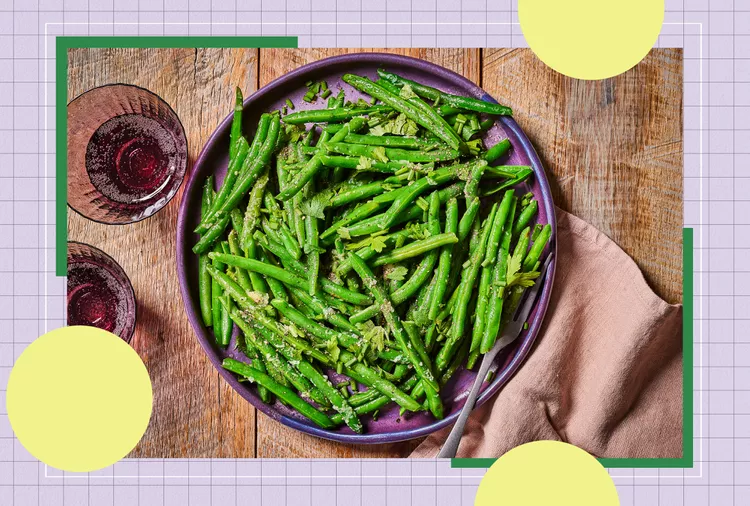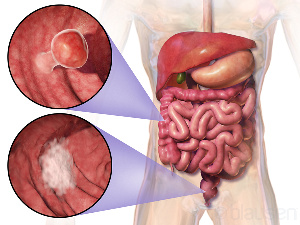What happens to your body if you regularly eat Green beans

Beyond their culinary versatility, green beans are packed with nutrients that offer many health benefits. They are filled with fiber, vitamins, minerals and plant compounds that make them ideal for regular consumption. Keep reading to learn more about how regularly consuming green beans can affect your overall health and well-being.
Health Benefits of Green Beans
May Promote Strong Bones
Green beans deliver an impressive amount of bone-strengthening vitamin K, making them a delicious way to support your skeletal health. More specifically, vitamin K aids in activating osteocalcin, a protein that plays a role in bone mineralization. As such, vitamin K has been found to reduce bone fractures significantly.2 Therefore, consuming green beans can help keep your bones strong and resilient.
May Enhance Your Immune Function
When it comes to supporting your immune system, one of the first nutrients that typically comes to mind is vitamin C. Whether you’re dealing with a runny nose, congestion, cough or sore throat, research has revealed that vitamin C can help dial down the intensity and shorten the duration of common cold symptoms.3
While citrus fruits are renowned for their vitamin C content, it may come as a surprise that green beans are also a source of this immune-enhancing nutrient. A 1-cup serving of green beans provides 16% to 18% of of vitamin C’s recommended dietary allowances.45 So, the next time you’re feeling under the weather, consider boosting your intake of this essential nutrient with a serving of green beans.
May Support Your Gut Health
If improving or maintaining your gut health is one of your top priorities, green beans are a gut-friendly legume to keep stocked in your fridge. These long legumes are rich in dietary fiber, a nutrient that promotes bowel regularity and feeds the beneficial bacteria in your gut.6
Green beans are also considered low in FODMAPs (fermentable oligo-, di- and monosaccharides and polyols), which are carbohydrates that can lead to abdominal discomfort, gas and bloating in those with irritable bowel syndrome. Therefore, green beans are a great option for those following a low-FODMAP diet.
May Improve Your Heart Health
The nutrients in green beans may also benefit your heart health. Most notably, green beans contain fiber, folate and magnesium, which have been linked to the prevention of harmful plaque buildup on the inner walls of arteries.7
Additionally, green beans are filled with powerful plant compounds called flavonoids. These compounds are known for their anti-inflammatory and anti-platelet properties, which protect blood vessel walls and aid in preventing blood clot formation.7 Therefore, a daily serving of green beans may help reduce cardiovascular disease risk.
May Promote Positive Pregnancy Outcomes
Green beans also offer key nutrients that are essential for a healthy pregnancy. For example, green beans are a valuable source of folate, which is required for proper fetal brain and spinal cord development. Therefore, consuming folate-rich foods like green beans helps to reduce the risk of major congenital disorders, including anencephaly and spina bifida.8
Green beans also provide a small boost of iron, which is critical for supplying oxygenated blood to the unborn baby. The caveat is that the iron in green beans is non-heme iron, which requires vitamin C for proper absorption. Fortunately, green beans are a good source of vitamin C. Therefore, green beans can be a nutrient-dense addition to a well-balanced prenatal diet.
May Aid in Blood Sugar Regulation
For those looking to manage their blood sugar levels, green beans are an excellent dietary choice due to their high fiber content. Green beans contain a type of fiber called soluble fiber, which forms a gel-like substance in the gut that slows the absorption of glucose (sugar) into the bloodstream. As a result, soluble fiber helps to prevent blood sugar spikes. Therefore, those with diabetes may benefit from a blood-sugar-stabilizing diet incorporating regular green bean consumption.
Might Reduce Your Risk of Cancer
Green beans might also impart anti-cancer benefits. Research suggests that regularly incorporating green beans into your meals may reduce the risk of breast, colon and prostate cancer. Their anti-cancer effects may be due, in part, to the presence of chlorophyll, carotenoids, phenolic acids, fiber, phytic acid and saponins.9 These compounds in green beans work together to help combat cell-damaging oxidative stress and inflammation, both of which are linked to an increased risk of cancer.
Nutrition Facts
The nutrient profile of green beans varies depending on the variety, growing conditions and preparation methods. In general, green beans are a great source of vitamin K, vitamin C, folate and fiber. They also contain small amounts of minerals, including iron, magnesium and potassium. One cup (125 grams) of cooked green beans boasts:4
- Calories: 44
- Total Carbohydrates: 10 g
- Dietary Fiber: 4 g
- Total Sugars: 5 g*
- Protein: 2 g
- Total Fat: 0 g
- Vitamin K: 60 mcg (50% Daily Value)
- Vitamin C: 12 mg (13% DV)
- Vitamin A: 40 mcg (4% DV)
- Folate: 41 mcg (10% DV)
- Iron: 1 mg (5% DV)
- Magnesium: 23 mg (5% DV)
- Potassium: 182 mg (4% DV)
*The sugars in green beans are naturally occurring ones.
Potential Side Effects and Precautions
While most people can enjoy green beans without adverse effects, it’s critical for individuals taking certain medications to be aware of potential drug-nutrient interactions. For example, those taking blood-thinning medications like warfarin (Coumadin) should be more cautious of their intake of vitamin K-rich foods like green beans. This is because vitamin K is involved in the blood clotting process, which can interfere with the effectiveness of anticoagulant medications.10 However, this does not mean people taking blood thinners must completely avoid green beans and other vitamin K-rich foods.
Instead, those taking anticoagulants should focus on consuming the same amount of vitamin K daily to avoid medication effectiveness fluctuations.10 More importantly, you should always consult a health care professional to discuss dietary changes and medication interactions.
How to Choose and Store Green Beans
Before purchasing a batch of fresh green beans, be sure to inspect the beans for impurities, bruises, brown spots and mold. Reach for green beans that are vibrant in color, firm to the touch, smooth on the surface, and snap when broken in half. To maintain their quality and freshness, store them unwashed in a container in the crisper drawer of your refrigerator for up to a week. If you want them to last even longer, you may also choose to blanch and freeze them.
Green beans can also be purchased canned for convenience and an extended shelf life. Look for cans that are free of leaks, dents, rust and bulges, which may be signs of contamination or spoilage. Once you’ve found the ideal can, take a peek at the Nutrition Facts label. Opt for canned green beans that are low in sodium, and drain and rinse them thoroughly before cooking them.
Best Ways to Cook and Enjoy Green Beans
Make green beans your go-to legume with these simple cooking methods and recipes.
Steam and Sauté
If you’re looking for a foolproof way to prepare crisp and tender green beans every time, consider first steaming and then sautéing them. Simply place your green beans and a small amount of water in a skillet with the lid on, allowing the water to evaporate as the beans cook. Once the water has completely evaporated, you can sauté and season to your liking. For inspiration, try our herbed-infused Garlic-Butter Green Beans.
Stir-Fry
Prepare green beans in a snap by tossing them into a sizzling wok for a quick stir-fry. Add in additional veggies, your protein of choice and your favorite sauce, and voilà! You’ll have an easy and delicious weeknight dinner ready in under 30 minutes. Need recipe ideas? Give our Szechuan Tofu & Green Bean Stir-Fry or Pork & Green Bean Stir-Fry a try.
Roast
Throw your green beans onto a sheet pan with fish, chicken or tofu for a hassle-free meal prep to enjoy throughout the week. All you have to do is spread your ingredients across the pan, season to your liking and let the oven do the rest. Check out our Sheet-Pan Orange-Apricot Drumsticks recipe that incorporates green beans, potatoes and chicken for a nutritious and filling meal.
Bake
What better way to enjoy green beans than in a creamy baked casserole? Whether you are attending a family gathering, holiday party or potluck, green bean casserole is always a crowd-pleaser. The next time you host a get-together or crave a comforting side dish, whip up our Healthy Green Bean Casserole to delight your guests or satisfy your own taste buds.
Boil
For those who prefer a softer green bean, boiling is ideal. The trick to retaining flavor in boiled green beans is to cook them in your favorite broth along with seasonings like garlic, onion and crushed red pepper. Try our mouthwatering Soft Green Beans for a savory side dish.
The Bottom Line
It turns out that regularly enjoying green beans is, in fact, great for your health. Packed with vitamins K and C, folate, fiber, minerals and potent plant compounds, green beans offer several essential nutrients in each serving. Each of these nutrients plays a pivotal role in supporting various aspects of your health, from promoting strong bones to healthy immunity, aiding digestive health and reducing the risk of chronic diseases like heart disease, diabetes and cancer. Not to mention, they are incredibly versatile and can be prepared in a variety of ways to suit your flavor and texture preferences. Whether you like them steamed, stir-fried, roasted or baked, green beans are an ideal legume to include in a well-balanced diet.
Source: Thepressradio.com|eatingwell.com





